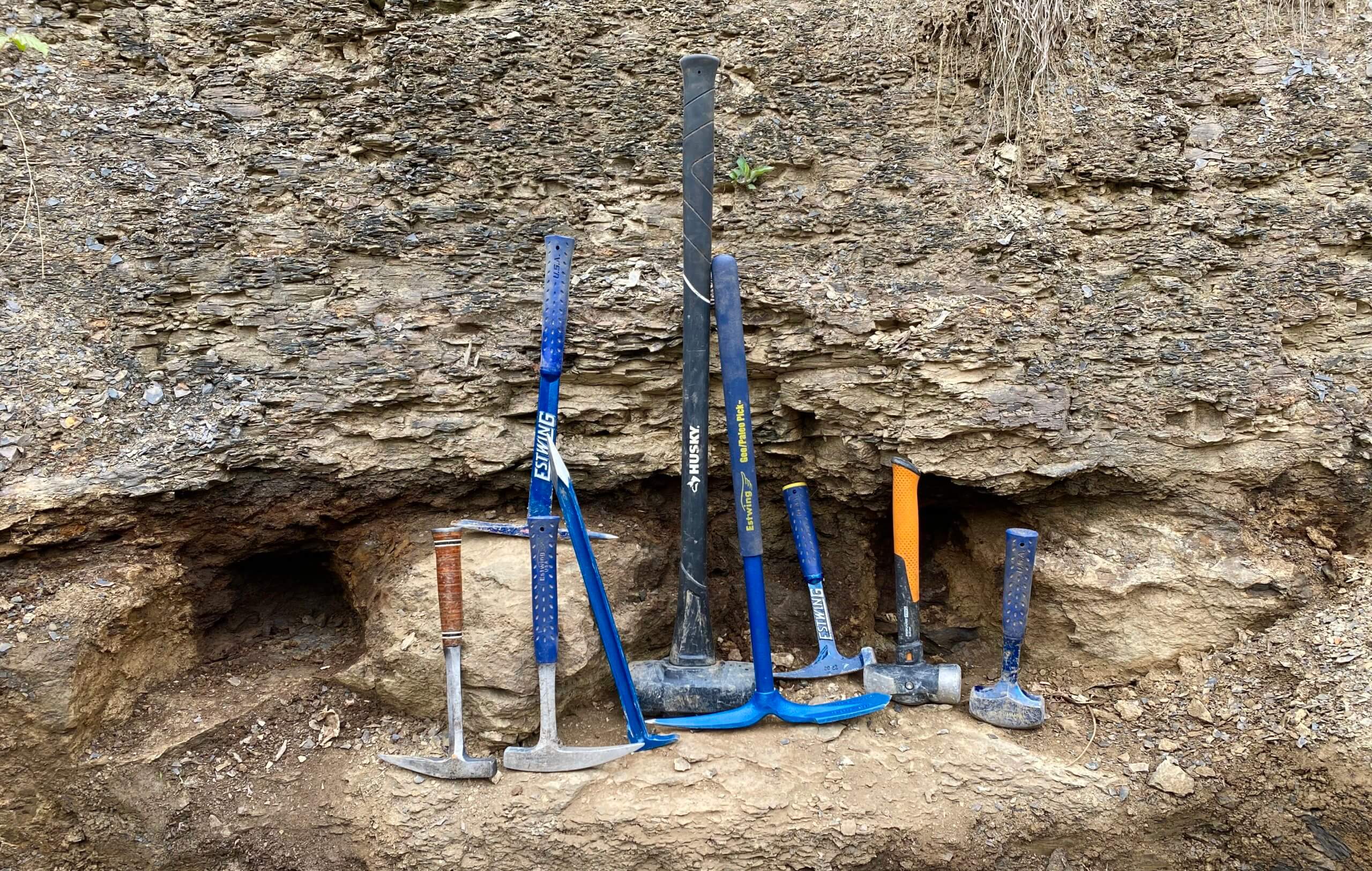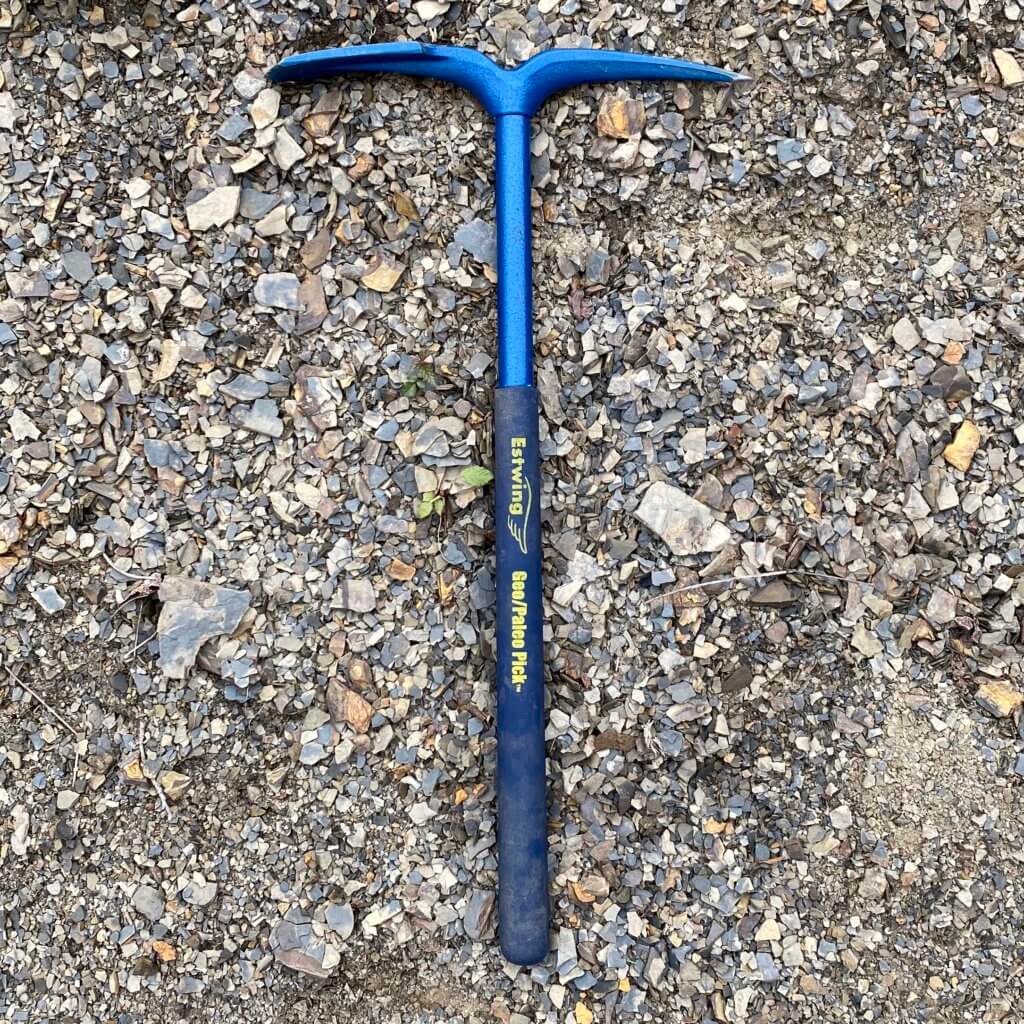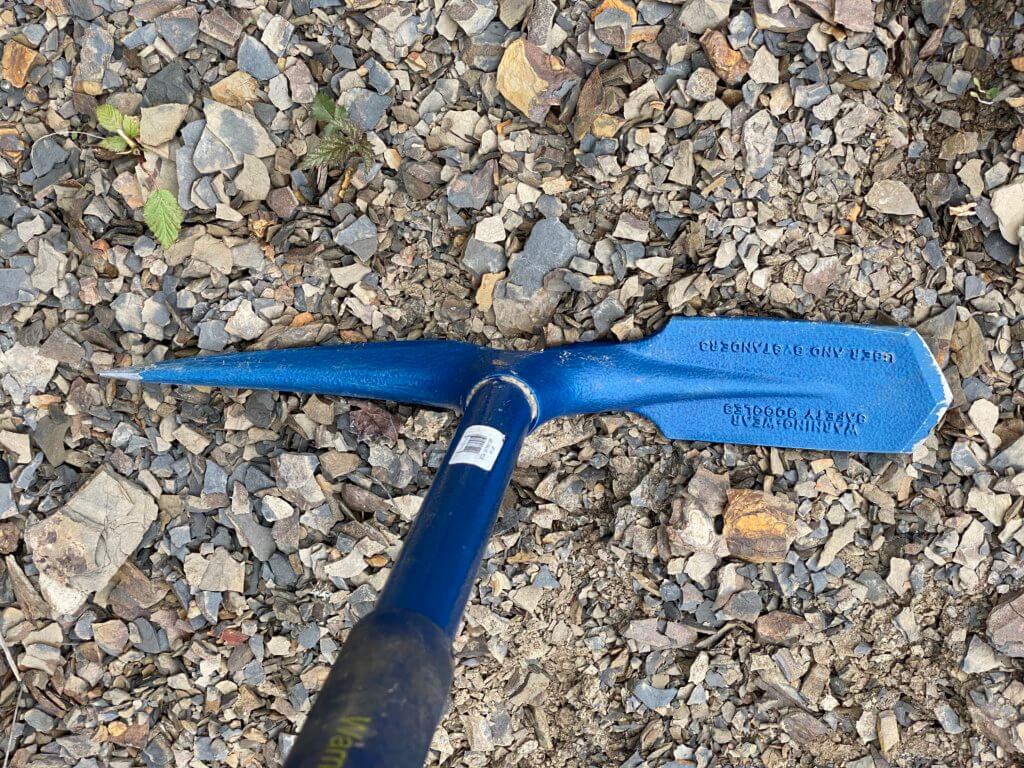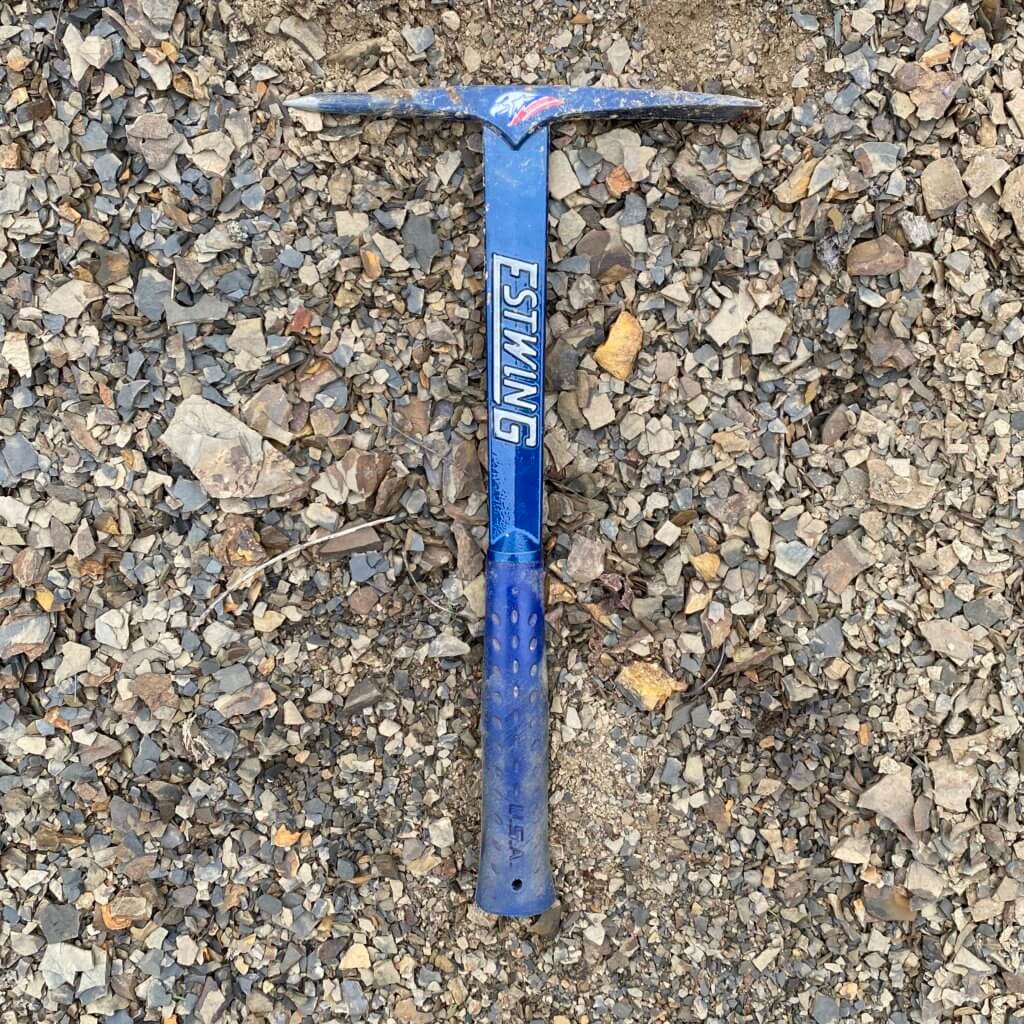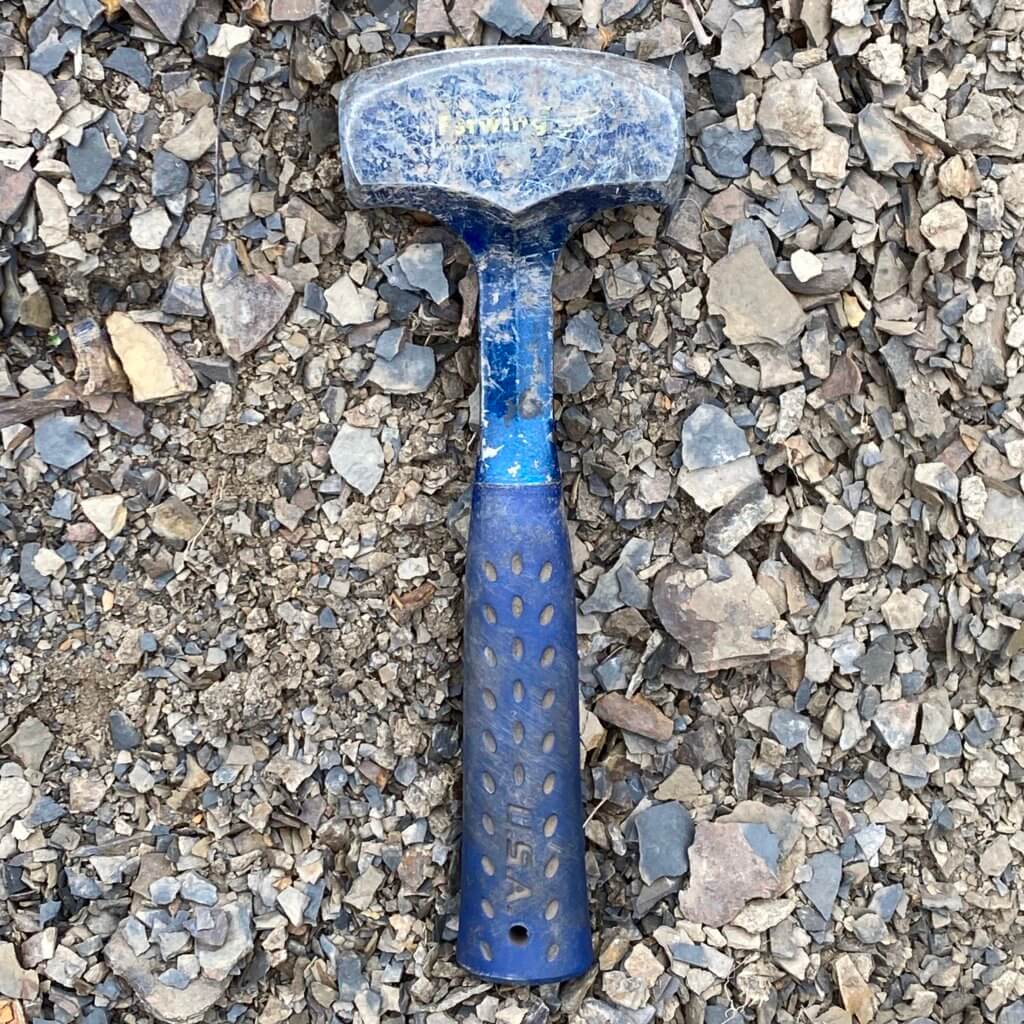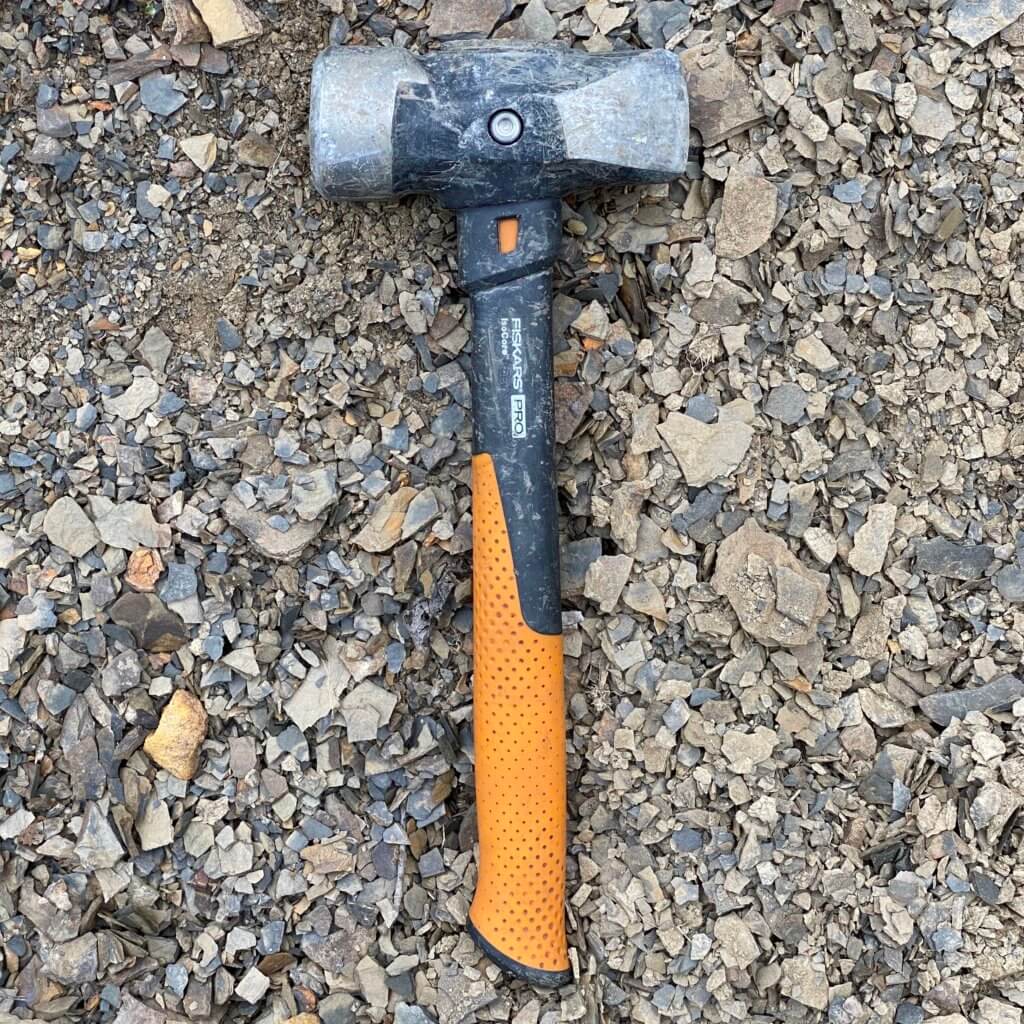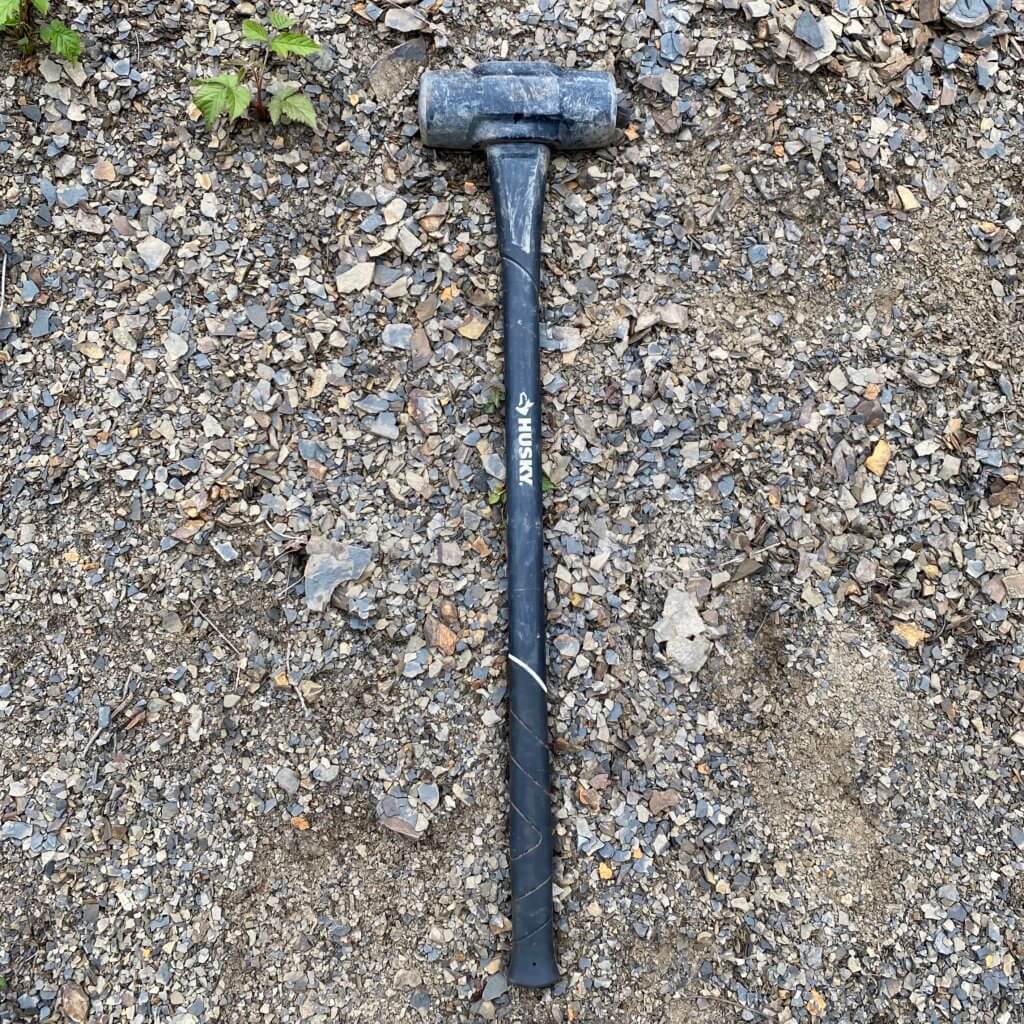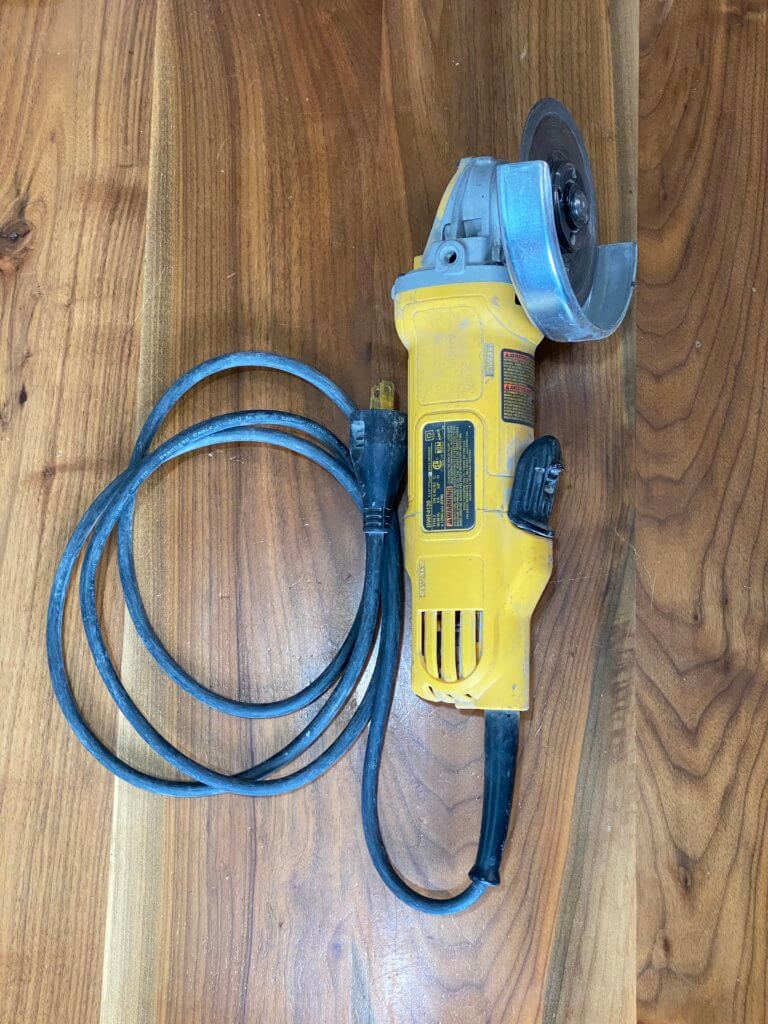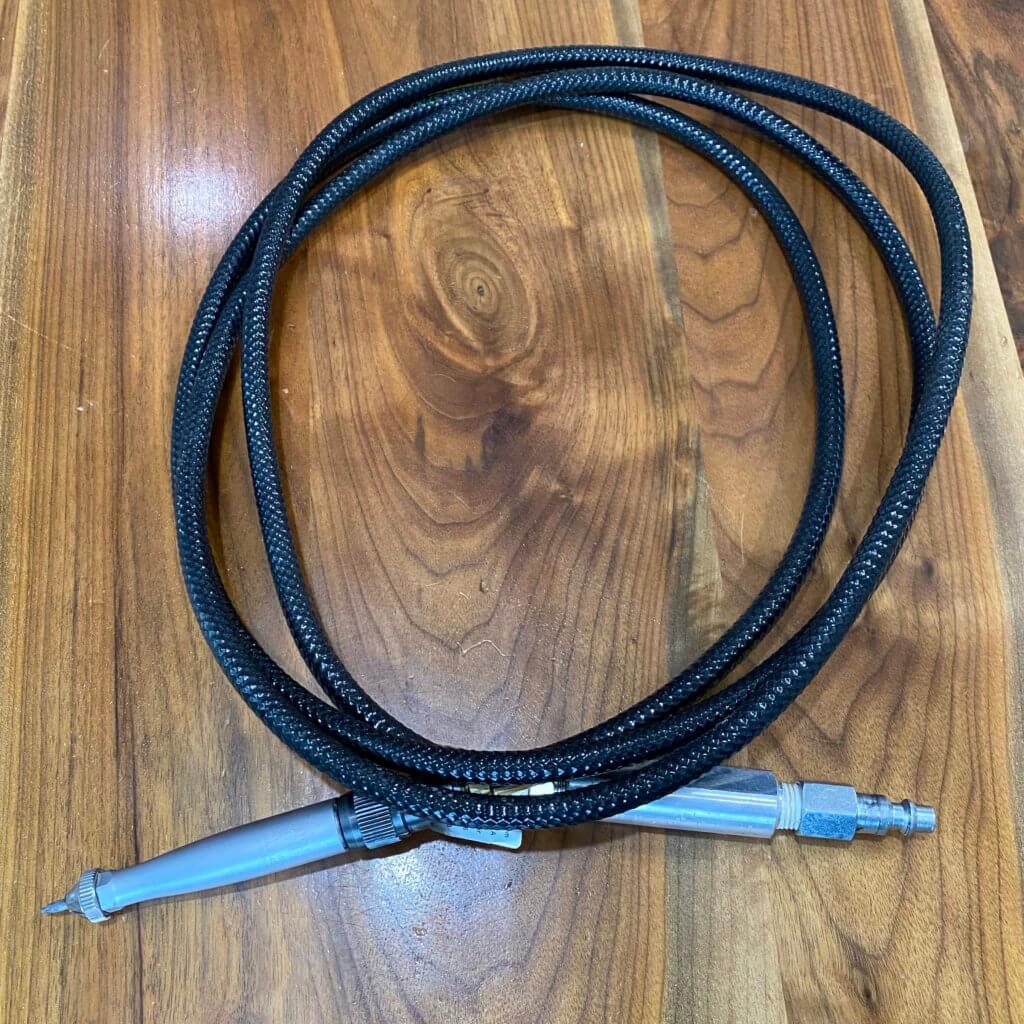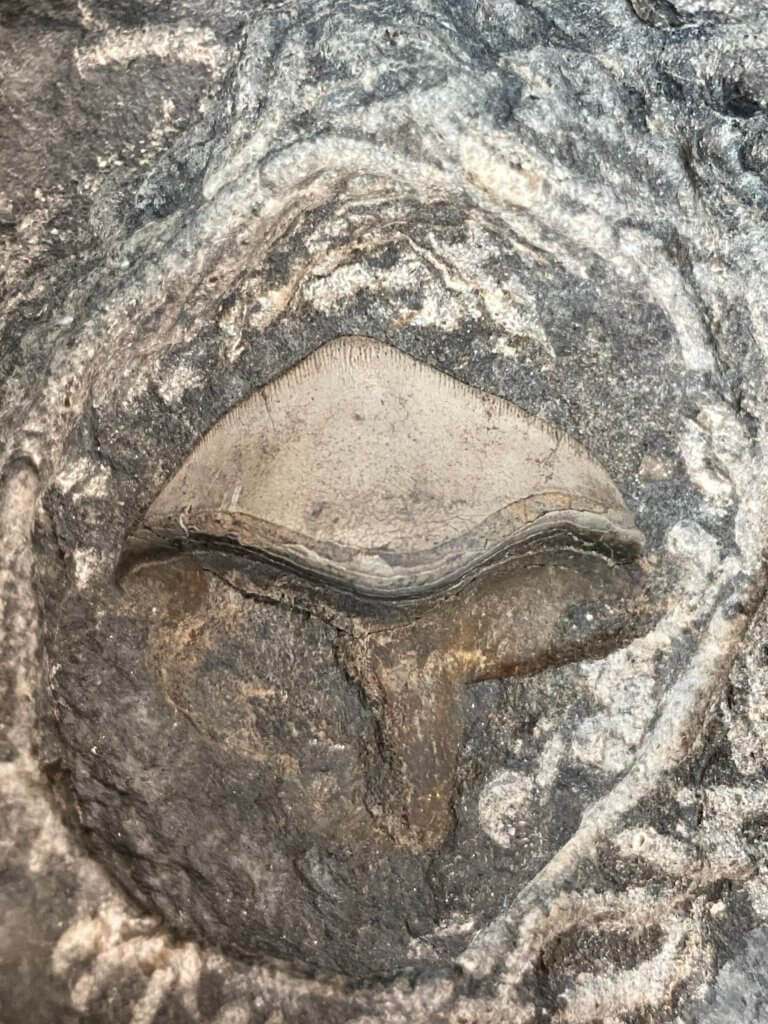To find and extract fossils, you’ll need a geologist’s hammer, occasionally called a fossil hammer and most commonly known as a rock hammer or pick. However, they have several other names, including picks, fossil hammers, geology hammers, and fossil hunting hammers. I have enjoyed obtaining and learning about the different geological hammers and tools for finding and extracting fossils. I started with the Estwing bricklayer’s hammer. It features a flat chisel back, which is useful for splitting shale. Below I’ll review and discuss several different hammers and tools I’ve used over the past few years.
One of the great debates a fossil collector faces before going to a location is to pick which tools to bring. Ideally, you would get every piece of equipment you have. Unfortunately, each piece will add weight and difficulty to your outing. There is a balance between weight and utility. The information below will describe how useful each tool is, and I consider weight and ease of carrying.
In fossil collecting, you must first remove the rocks from the ground. Rock picks are great tools for this situation, slicing into the ground and forcing rocks to move. There are two primary rock types I deal with, limestone and shale.
Limestone vs. Shale and the Tools to Work Them
Limestone is a natural cement; locally, this means a silty/sandy mix fused with calcite. I use direct hammer blows to force open natural planes throughout the rock. Or, you can use a chisel and a rock hammer together. Yet, these planes are not always flat and often curve and snake through the stone. Embedded fossils can also create cleavage planes. This makes separating limestone a chore, but the different hammers can help.
Shale rock consists of fine sediment loosely cemented together. It can be very fissile. This means it easily splits along natural planes in the rock. Using a hammer with a flat chisel back, you can separate it into several flat pieces for inspection. There are undoubtedly particular planes within the rock that are easy to separate, and others can be more or less hard to split. For precision work, a cold-forged chisel is better. Over time, shale will break into very small pieces with exposure to sunlight, water, and the environment.
The Burgess Shale is a famous 508 million-year-old deposit from the Cambrian period in Western Canada. Workers explore this stratum by carefully splitting the shale using special flat pieces of metal. This exposes beautiful, preserved, soft creatures from half a billion years ago.
In Parks Township, we have plants and other creatures in the shale. Some layers contain mostly plant fossils, and the layers closer to the limestone can contain crinoids, brachiopods, clams, cephalopods, and all sorts of unique fossils. But, preservation in shale can often mean the resulting specimen is much more fragile. The samples themselves are also often fissile.
So, these are the tools to use for extraction. After going through all the different hammers and extraction tools, I’ll discuss other tools used only for fossil hunting.
Safety First!
Anyone using these tools must wear the proper eyewear. Aside from the potential of flying steel fragments, rock always finds a way to your face. Even lighter strikes can bring rock particles to your eyes. Always shield your face correctly and be aware of your surroundings. Especially if people are near, spectators can and will get struck from 15 or more feet away with rock fragments when these tools meet the matrix. Clear the area of anyone and anything you care about. Also, never use a hammer to drive another hammer into a rock. That is what cold-forged chisels are for. Have fun, but be safe doing it!

Geological Hammers & Tools
Below you will find personal reviews of real-world amateur use of these tools for collecting fossils. I have been using these for a couple of years at this point. When I first started, I searched the internet for how to use these and came up empty. So finally, I have figured out what’s best through experience with each tool.

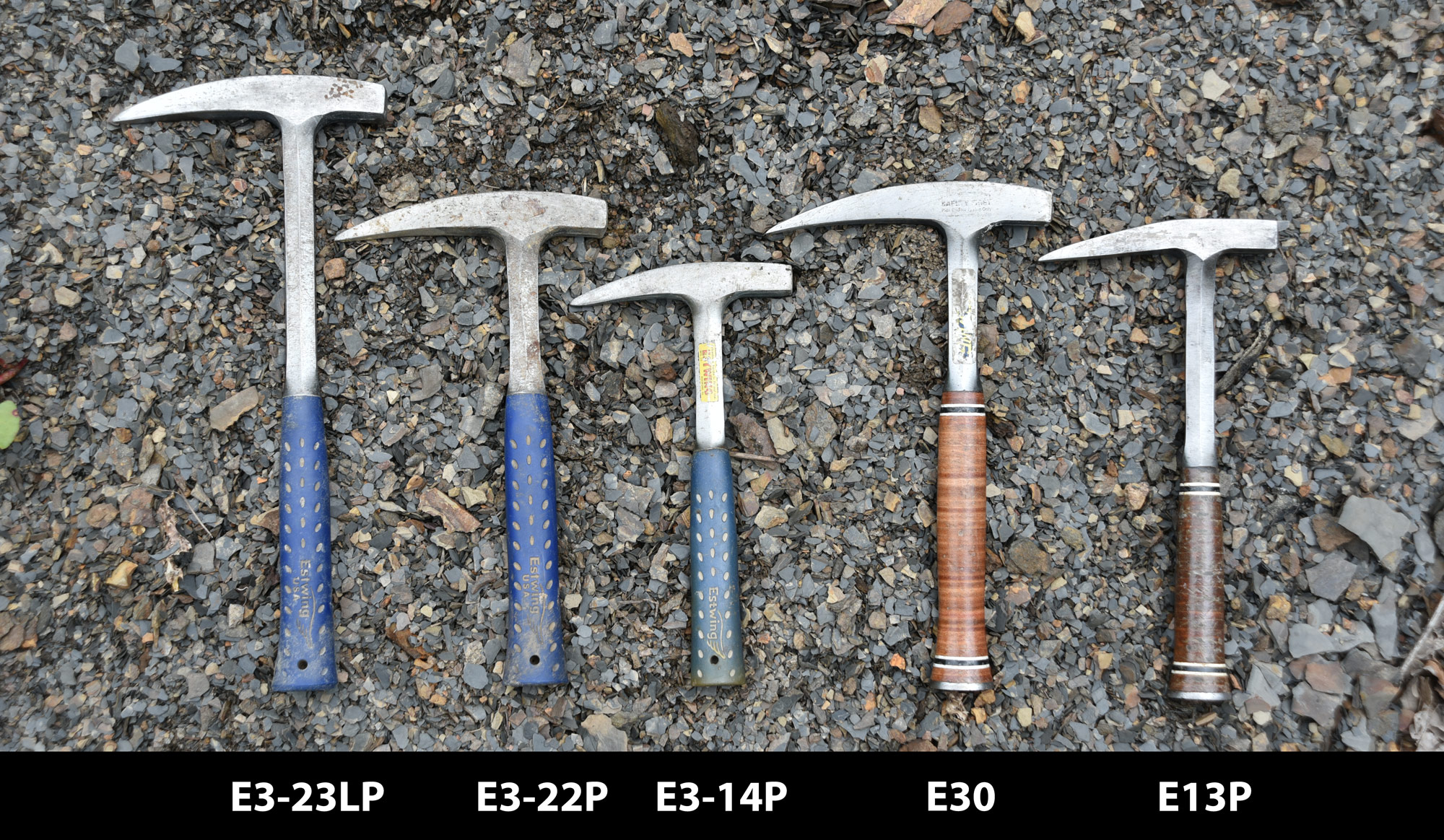
A Rock Hammer/Rock Pick Spreadsheet
Before I review some rock pick models below, I’ll drop a link to a spreadsheet of all Estwing Rock Picks. As I became interested in what the model numbers meant, I started to collect information on the differences in each. ⁂ Check out the spreadsheet Here.
Estwing Rock Pick – 22 oz. – E3-22P
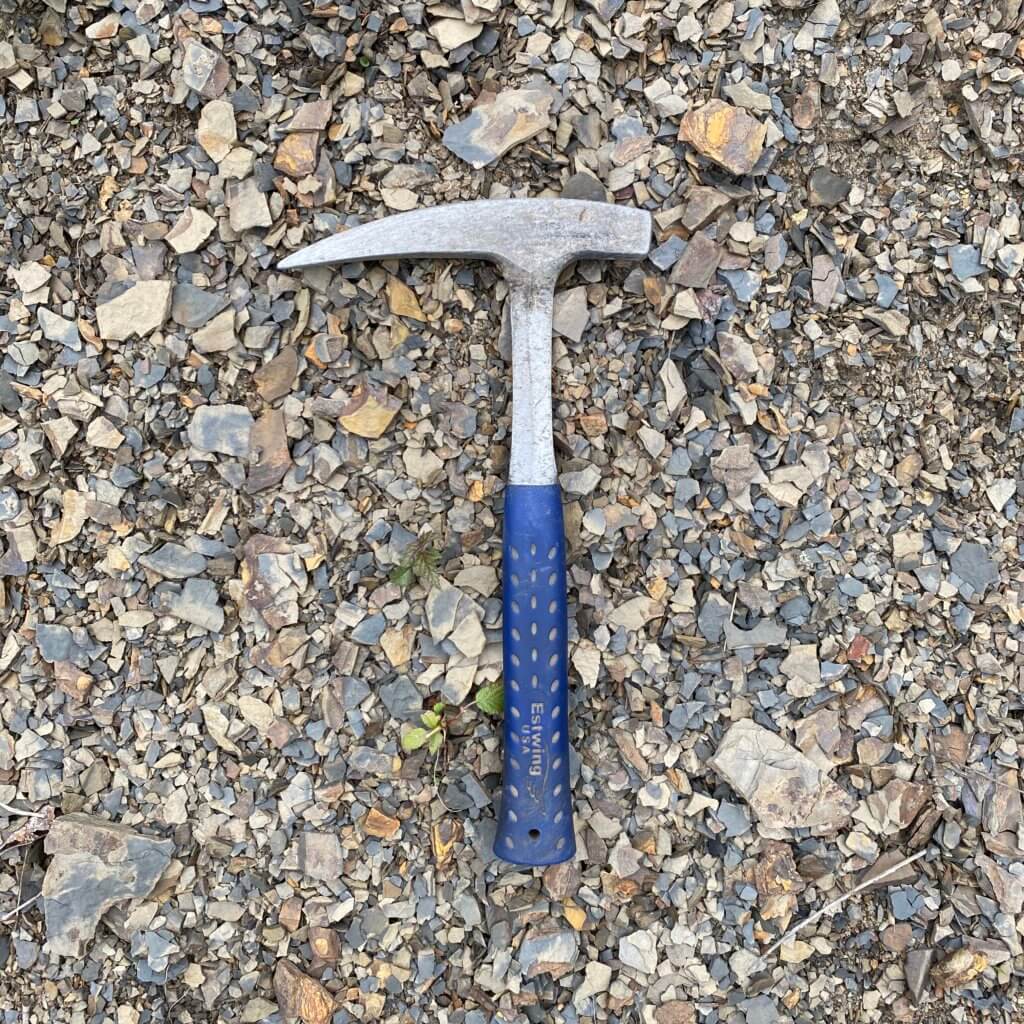
If I were to pick one hammer to use for finding fossils, this is it. I purchased this hammer second overall. I wanted the pick end, which helps dig between rocks and tear up the terrain. The square hammer portion strikes well and is useful for cracking the hard limestone locally. There are three primary grips you can get. The leather grip is by far the best looking but is natural and will wear out quickly. The blue rubber grip is modern and probably the best overall grip. There is also a bright orange variation. The blue rubber grip has aged as well, though.
Use the pick end for prying between layers of rock. Striking rock faces directly is strictly forbidden by the manufacturer. This highly increases the likelihood of metal flying. Instead, I use the pick end to pry at and separate pieces along natural faults in the rock. It is very sharp but wears down quickly. You can resharpen the pick end if it becomes dull. I have never resharpened mine.
There are other variations of this rock hammer. One has a more extended handle. This can be useful for more forceful blows but at a loss of control. Also, there is a special edition paleontology version with a leather grip and black painted metal. There is a logo with a Tyrannosaurus skull imprinted into the leather. While it’s very cool looking, it’s also double or more the price of the standard rubber blue grip version. And the black paint will wear off with use.
Estwing Rock Pick – 13 oz. – E13P

The E13P hammer is the smaller version of the 22 oz pick. It’s advantageous for light work, but you’ll quickly miss the striking power that the 22 oz provides. However, you’ll curse the weight of the heavier one when carrying it, so the 13 oz. has its use. Unless you are working with softer rock, I would ensure the heavier version is nearby to break more formidable rock if needed. I purchased the version with the leather grip primarily for looks. The grip has worn down pretty fast with lots of use. A clear coating protects it, and general use in the mud and rocks has worn it away.
I would recommend this hammer to have in the car with you. It is helpful if you stop somewhere unplanned and need a rock pick. While I wish the black lines in the handle were a helpful measurement, they are 4 5/8″ center to center, which is not so valuable for the field. Geologists will often mark grips with tape at a standard distance, such as 6 inches, to use in the scale of photos of geological terrain.
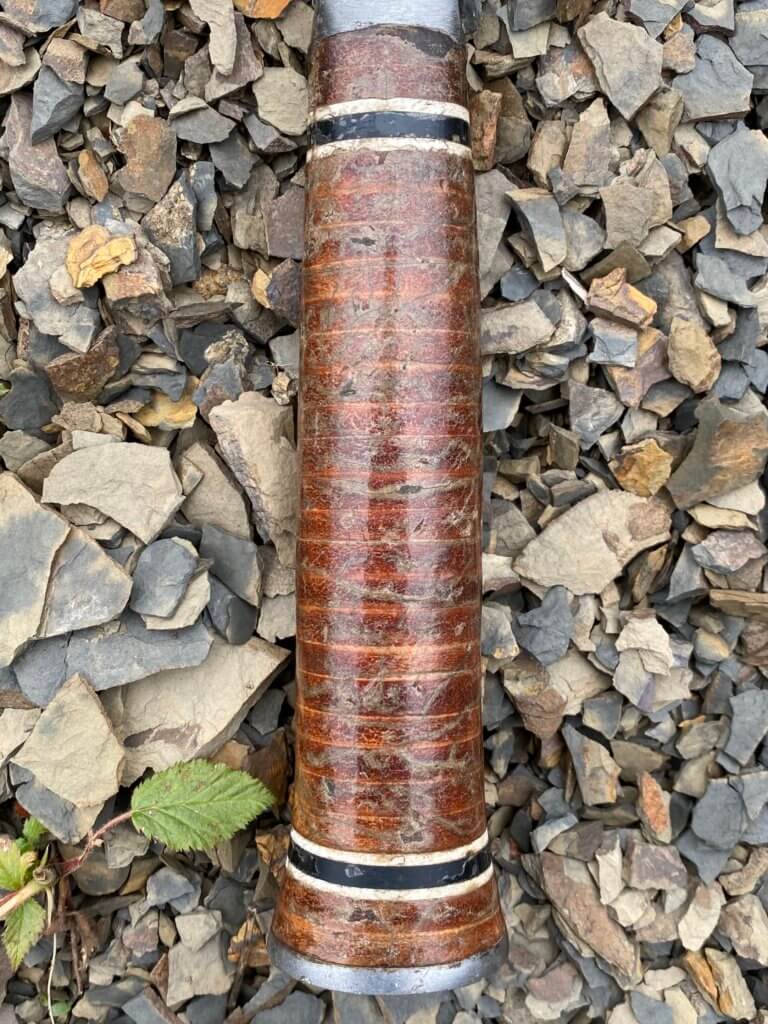
Estwing e3-22p 22 Oz. and e13p 13 Oz. Side-by-Side Fossil Hammer Comparison
The hammers have nearly the same length. The handle grip is shorter on the 13 oz version. The pick also comes down to a point at a hard angle on the 13 oz compared to the rounded appearance of the 22 oz. The 13 oz has a long flat bar past the handle. I have seen reports of bent handles on some 13 oz, but I would imagine this is rare and can quickly be returned and replaced.
The 22 oz is much better at breaking apart a much greater range of rocks. The 13 oz will have a bounce-back action when you hit a rock too big, where the blow won’t bury itself into the rock. You’ll appreciate the smaller hammer when cleaving off bits of the matrix from a field specimen.
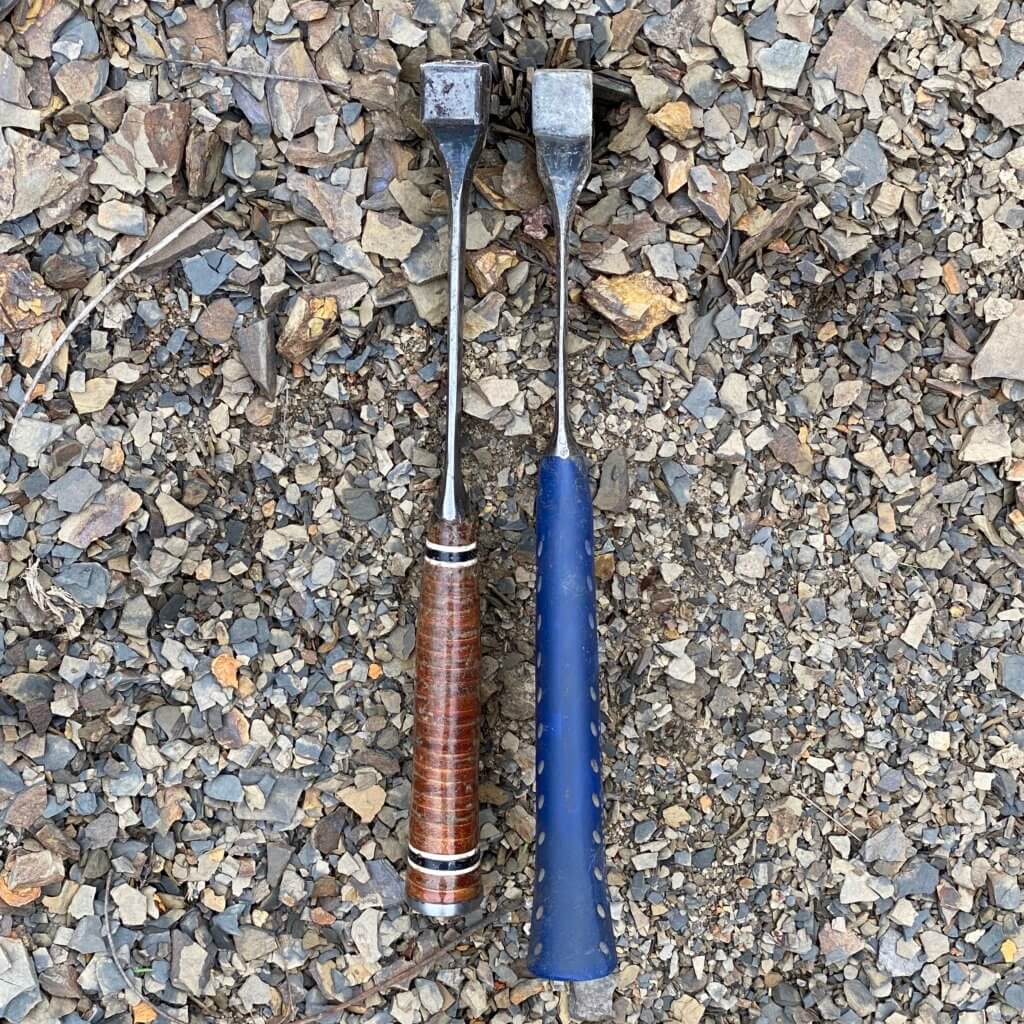
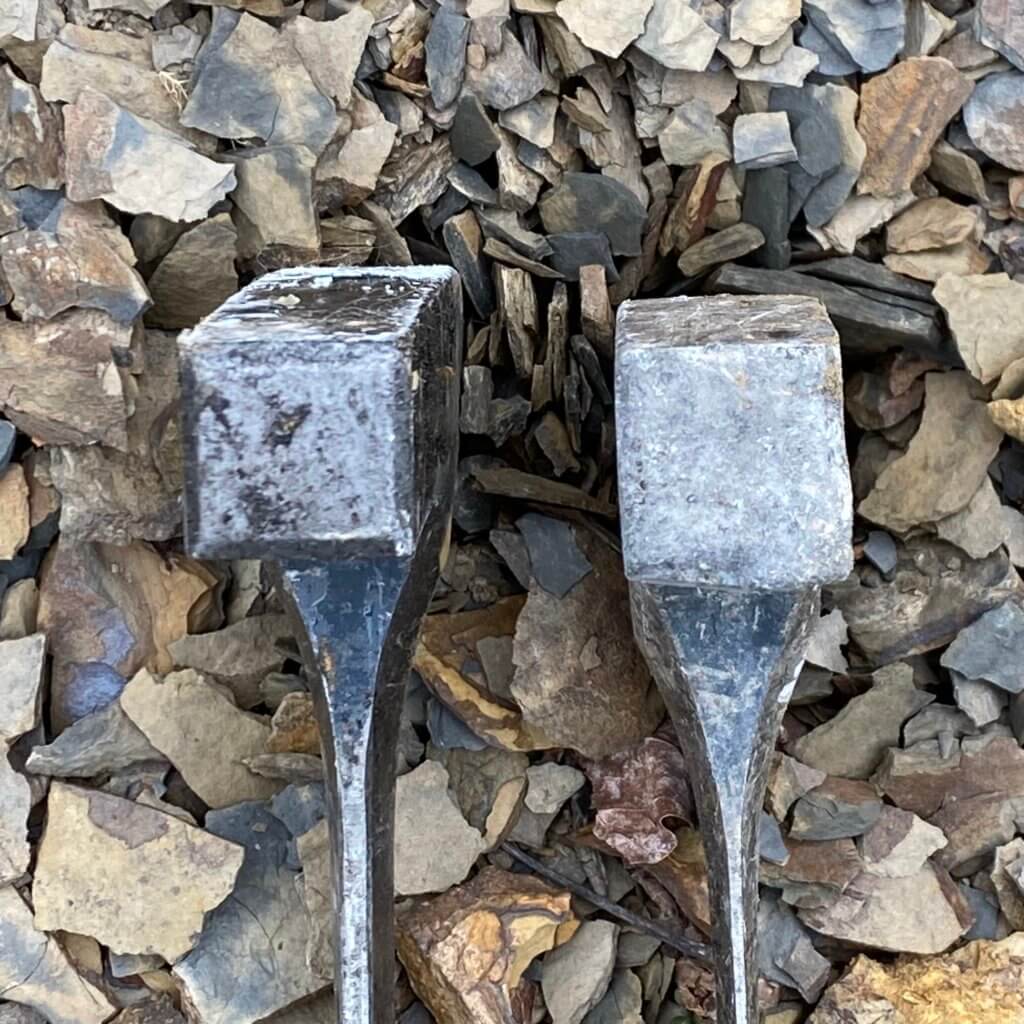
Estwing Gad Pry Bar – 18″ Forged Geological Tool with Pointed Tip & Chisel End – GP-18
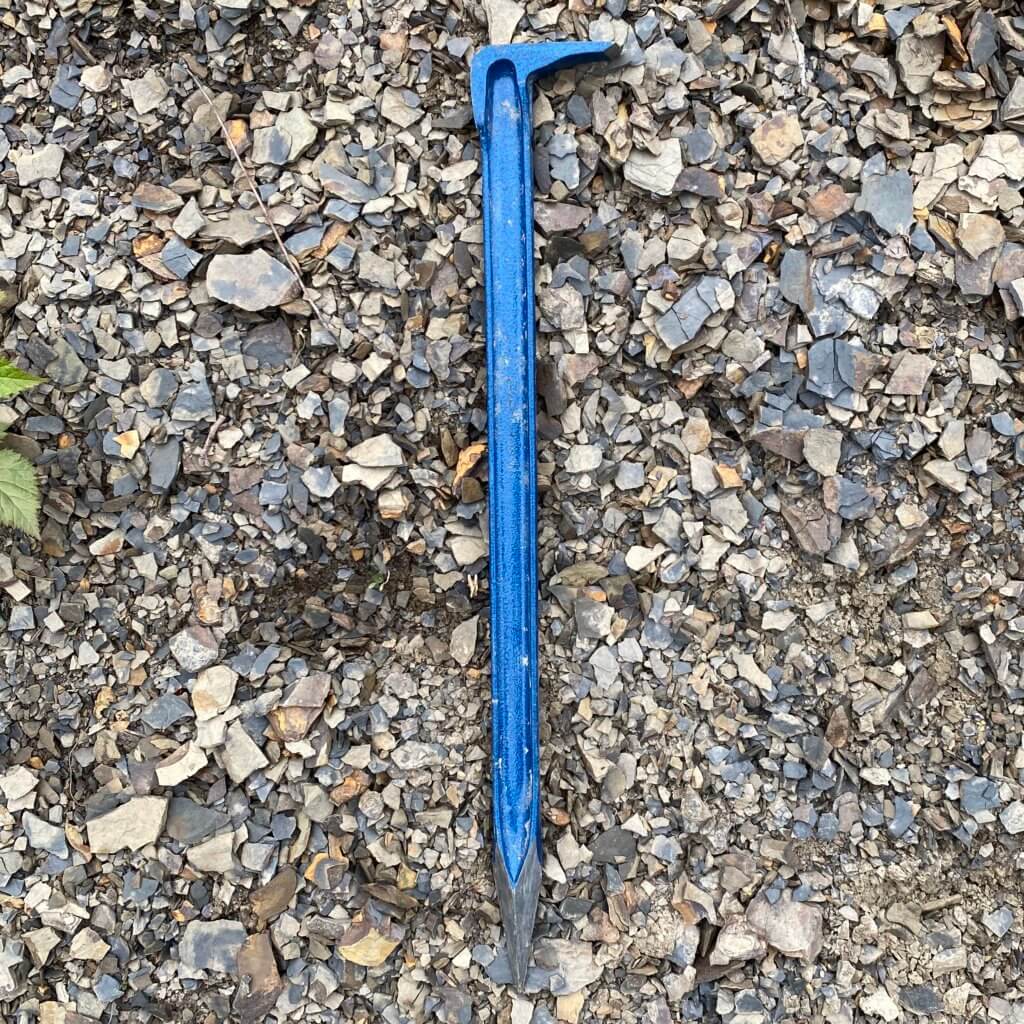
I’ve used this geological tool several times, and it gets excellent reviews online. The chisel end is no joke, coming to a wide sharp point. It’s handy for moving huge rocks using the lever end with little force. The central handle part of the tool has an i-beam shape to provide a great deal of strength when prying. As you can see in the detailed photos of the ends, the point expands out past the width of the i-beam.
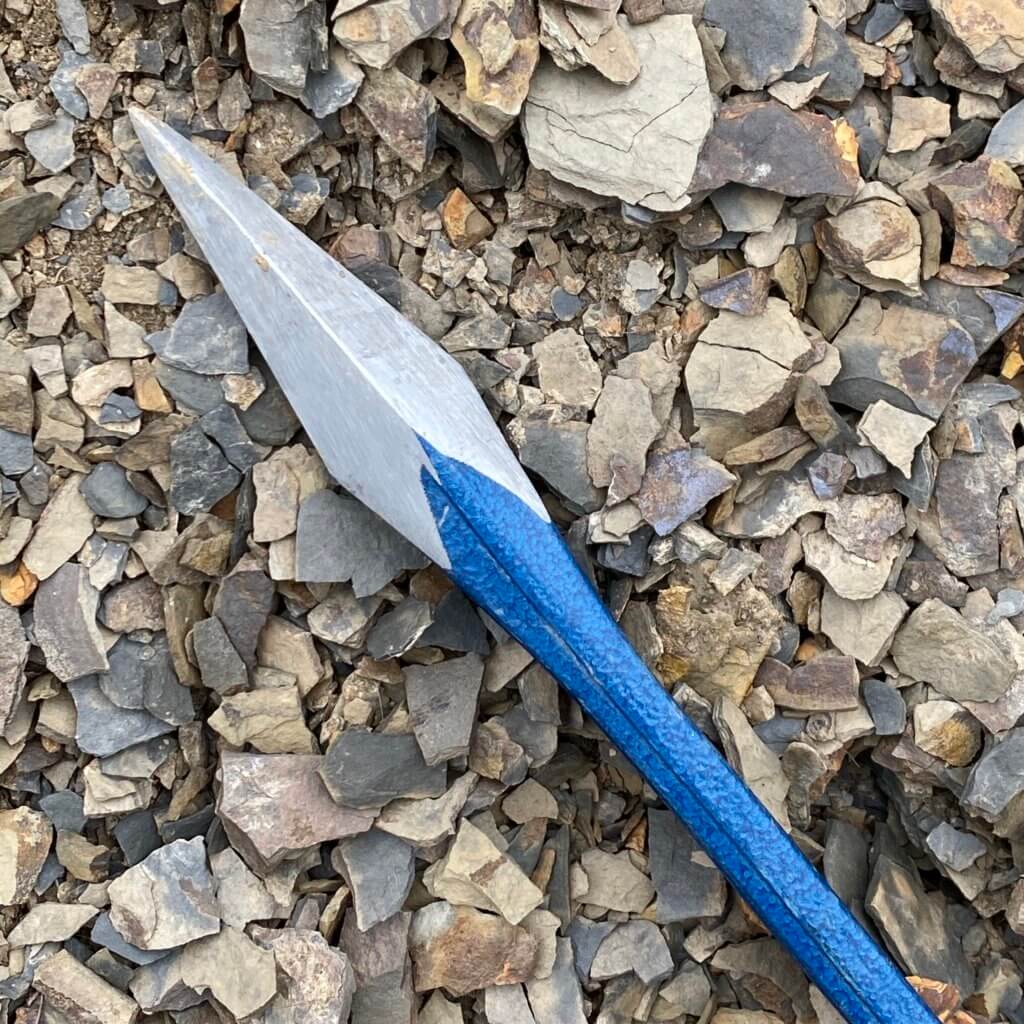
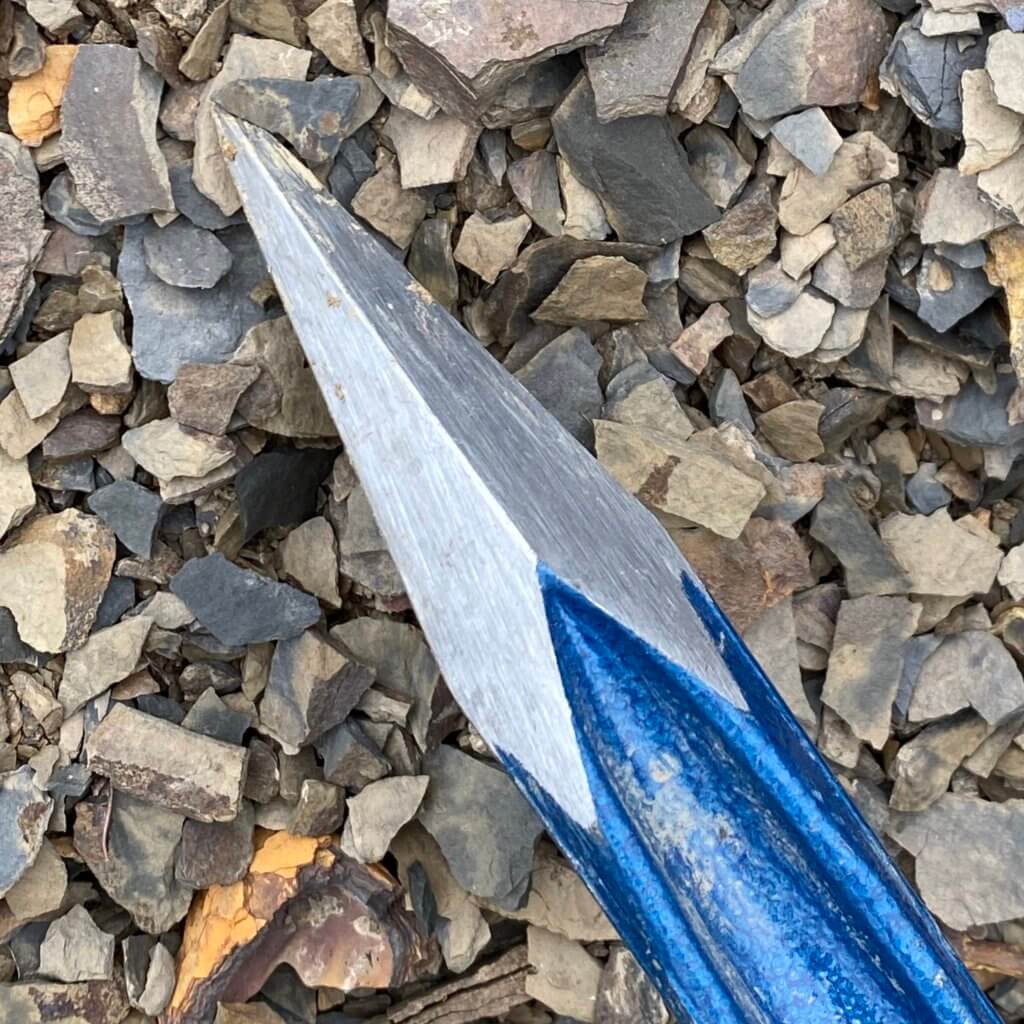
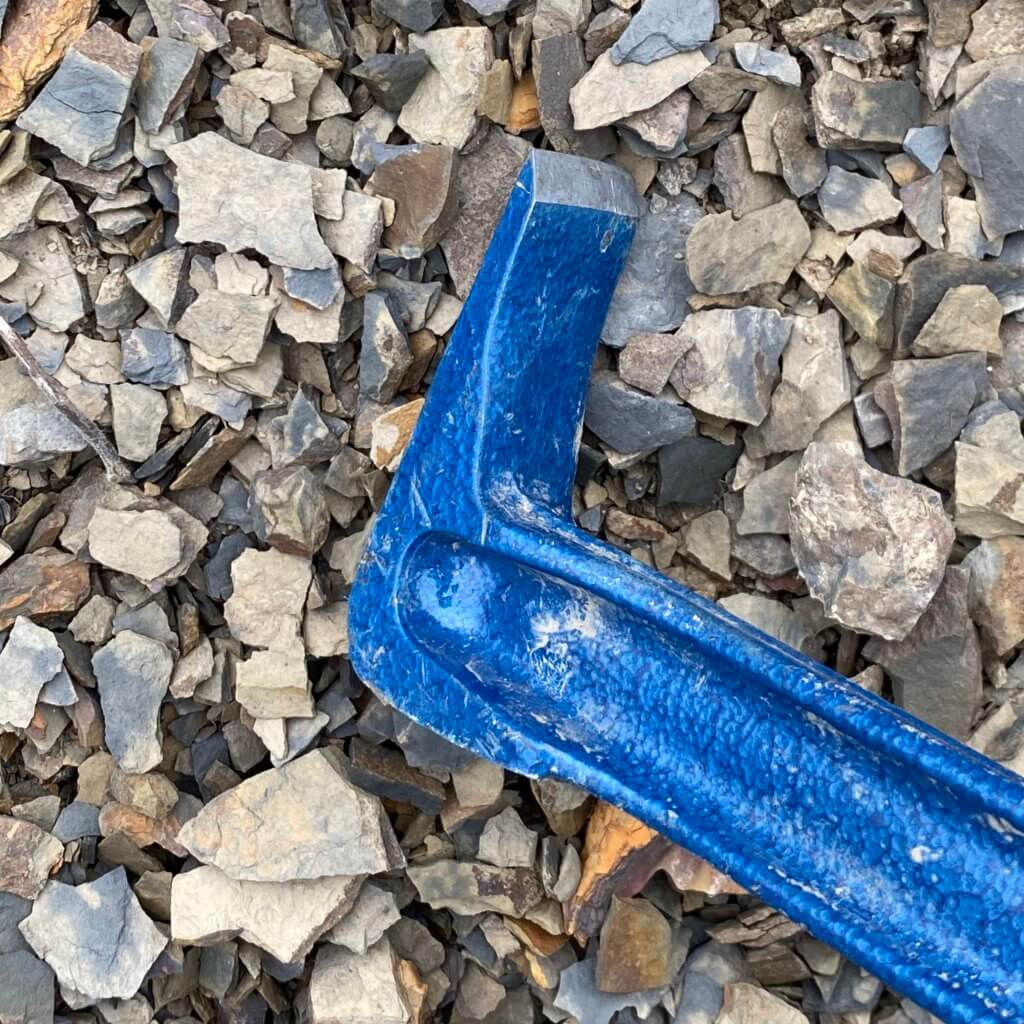
Estwing Geo/Paleo Rock Pick – 25″ GP-100 – Buy on Amazon
Part of Estwing’s Big Blue line, this pick is excellent for removing large amounts of ground quickly. When pulling limestone boulders from the hillsides, it is helpful to eliminate the loose rock around the boulder. It feels more petite in person than it looked online. The 25-inch length is valid. A few strikes on solid rock with the wedge end dinged it up.
The grip is made for comfort and is constructed of spongy rubber. The handle is circular. The pick end is perfect for burying into shale and prying it out of rock outcrops.
Estwing Burpee Rock Pick – 17″ BP500—Product on Amazon
The Estwing Burpee Rock Pick is somewhat of a smaller version of the GP-100. Estwing took input from rock hounds and geologists; thus, this tool was born. One end is a chisel point; the other resembles a giant nail. The entire hammer looks to be made from a single piece of steel. However, upon closer inspection, it is made of solid welded steel components. This tool is excellent for picking through and loosening tightly packed shale. The head of this tool has three magnets embedded for use in testing found minerals.
Estwing Bricklayers/Mason’s Hammer – 22oz – E6-22BLC
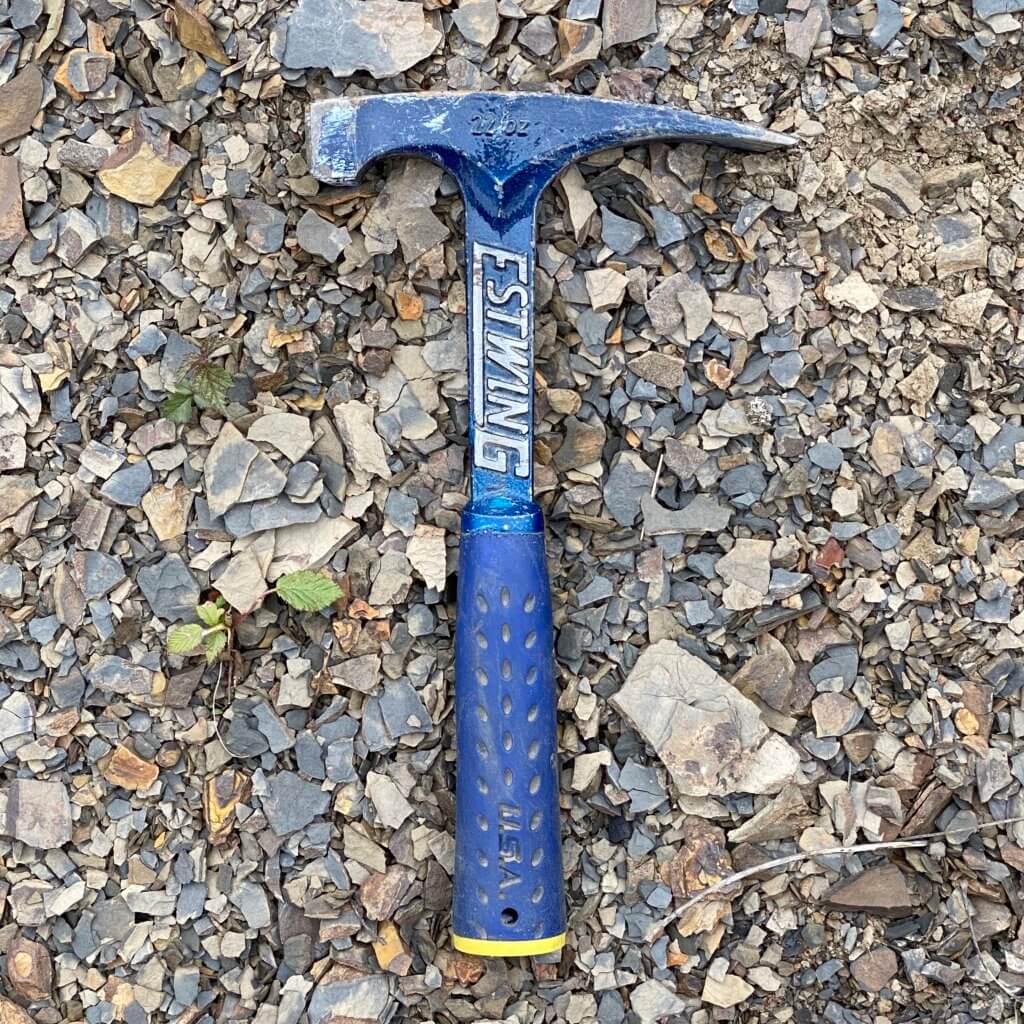
The first hammer I purchased explicitly for fossil hunting was the E6-22BLC. I was hunting for a fossil hammer; this was the only one the big box hardware store (Lowe’s) had at the time. You’ll find that rock hammers, in general, are rare at hardware stores. However, masonry hammers are more common, a construction trade tool. The chisel tip is great for splitting softer rocks but not something I would use for limestone. Also, not being an actual pick makes it challenging to use for pulling rocks out of the hillside.
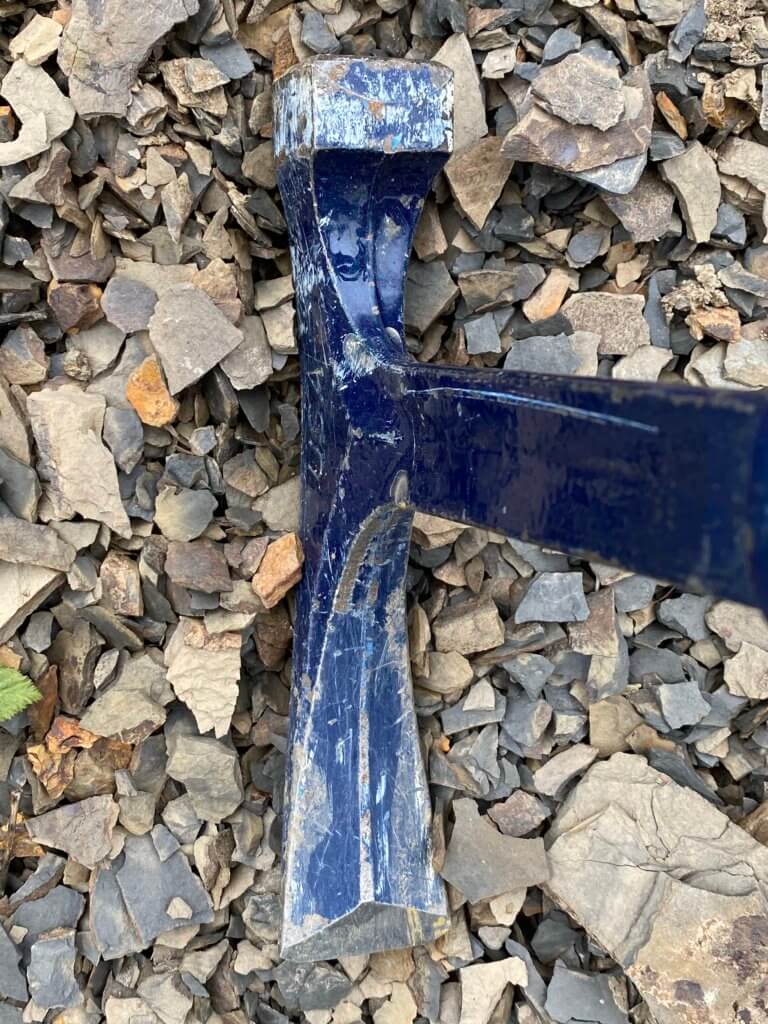
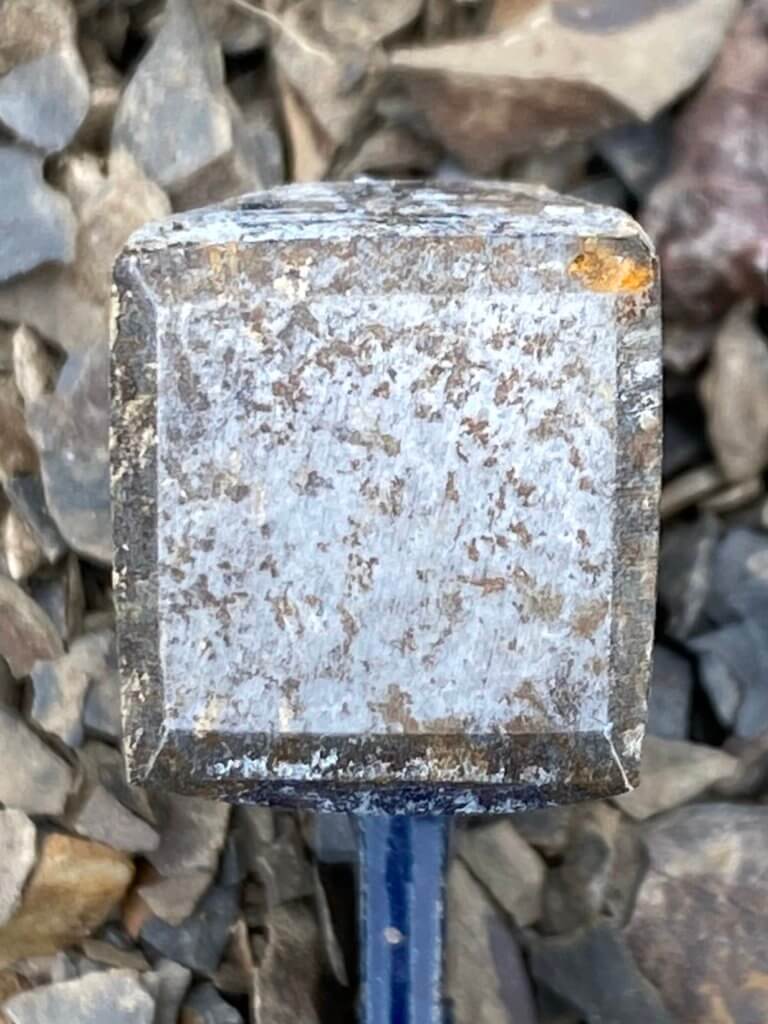
Estwing Drilling/Crack Hammer – 3-Pound Sledge – B3-3LB – Amazon Link
The mini sledgehammer is a solid piece of steel. Unlike typical sledgehammers, the head cannot separate from the handle unless the forged steel snaps. This sledge was my go-to hammer for cracking apart limestone until I obtained the Fiskars Pro IsoCore 4lb Club Hammer (see below). The B3-3LB has two flat striking heads, which are great for general blows and force. However, the Fiskars hammer offers a wedge-style head which is more helpful in splitting rock.
Fiskars IsoCore 4 Pound Club Hammer – 750810-1001 – Buy on Amazon
This hammer is an upgrade from the B3-3LB for two reasons. It’s just a pound heavier, so you get more weight per strike. The head features a wedge side, which allows for splitting large boulders, which I typically do. The handle is a composite of steel and plastics, which helps with shock absorption, but I hope it never breaks. Fiskars has an excellent lifetime guarantee. I often use a solid steel shovel, and when the blade finally snapped, they mailed me a new one for free.
One thing to note, the extra pound adds up for swings. Using this one-handed will tire you much quicker than the 3 lb Estwing sledgehammer. But, the additional 33.3% weight you get compared to the smaller hammer is worth it. I will often use both hands combined with gloves to steady the swing. When swinging a heavier hammer, the swing can continue through the rock, bringing your hands along for the ride. Wear protective gloves to help ensure you do not get gouged on the follow-through.
Husky 16 lb Sledgehammer
Cracking apart huge boulders is something I need to do with the local limestone here. The rocks are, on average, 9-15 inches thick and made of natural concrete-like limestone. I have a smaller, older sledgehammer with a wooden handle. It works, but I wanted something that I needed to hit the rocks with less. This thing is heavy and a chore to bring with me, but it’s often the best choice.
You must shield yourself when striking rocks with this 16-pound sledgehammer. Even with heavier pants on, I will find cuts and gashes in my legs through my clothes from rock blowback. You may want to wear something heavier than jeans. Alternatively, you can use it with shorter swings, but it will take multiple strikes to get the same effect.
Fiskars sells the PRO 750640-1001 16lb sledgehammer with flat and wedge face for nearly double the price of the Husky. If I had my first choice, I’d likely go with the Fiskars, as the wedge on the 4LB version has been fantastic. Remember, checking out Amazon Reviews, a buyer broke the head into two pieces after two years of use (J.D. Plooy 6/19/2019).
Other Useful Fossil Hunting & Geological Tools
Aside from the tools to work rocks from the ground and to split and shape them with force, you often need special tools for further processing. When you find a good fossil, often the process is to use your hammer and separate it from a larger rock. However, this doesn’t always go as planned. I use two angle grinders to make more precise cuts in limestone or sandstone.
Angle Grinders and Diamond Wheels
Trying to pick the correct cutting wheels for limestone was confusing at first. I ended up with a 4-inch cutting wheel. It is not as large as a 4 1/2-inch wheel. It is the only Dewalt diamond cutting wheel recommended for cutting granite. Granite is much harder than limestone.
I use four different cut-off tools.
- Corded 4 1/2 inch grinder
- Battery 4 1/2 grinder
- Corded 7-inch grinder
- Corded 12-inch cut-off cutter.
Safety First! Using a grinder on limestone or other rocks presents two primary risks. First, there is a high risk of serious injury by getting cut. If these can cut into the cement-like rock, these can certainly cut into you. Second, they generate concrete dust, a health hazard if you breathe it in. You must wear the proper air filtering gear while grinding, as breathing in this dust can cause severe respiratory problems or even death. I won’t use anything less than a well-fitting N95 mask when cutting limestone with diamond wheels.
Dewalt 4 1/2 inch angle grinder – DWE4120 – On Amazon
This grinder was the first step in cutting rock. Being only 4 1/2 inches in depth from the center, you only get a little more than an inch of cutting. However, this can easily separate a specimen from the matrix for removal later. In addition, making a clean cut can allow access for chisels to cut without removing a sample visible on the surface. However, there are times when a deeper cut is necessary.
Dewalt 20V MAX XR Angle Grinder, Slide Switch – DCG405B – Buy it on Amazon
This grinder has been one of the most versatile field tools I’ve enjoyed using. This grinder is not lightweight. However, this doesn’t keep it from being carried into the field to make cuts. The grinder is quite the power hog. I would recommend a fully charged 5 AH or 8 AH battery. The larger the battery capacity, the heavier it will be. But it will last through several cuts with a larger battery.
In the field, you should not need an extended amount of cutting. Using this grinder, you can save the specimens at risk of being destroyed when extracting with a hammer. It provides a nearly identical cutting performance as the corded version without worrying about power. Also, the cord does not get in the way. The cord can be a pain when using the corded version.
I would not recommend carrying this deep into the field. But its usefulness can outweigh the desire to travel light.
It is also useful for providing relief cuts. You can create these and use a hammer to finish the break.
Dewalt 7″ angle grinder
To cut a bit deeper, I also bought a 7-inch grinder. Fortunately, corded versions of these are pretty inexpensive. I bought the 7-inch version of the same blades I used for the 4 1/2-inch. If I need to be sure I get a deeper straight cut, I’ll use this grinder. I did have to buy a specialty cutting wheel guard to be able to use this properly, so while the base unit was affordable, it will cost more to get up and running for cutting through rock.
Evolution DISCCUT1 12″ Disc Cutter
I originally bought this to make relief cuts to make a limestone sink. It did its job great. This is a powerful tool and draws a ton of power. It can make a 4-inch cut in limestone and other rock types with the 12-inch diamond blade. However, it just feels dangerous. There is a ton of power generated in the 12-inch blade. But it does its job, and it cuts well. Users of this tool should beware of the large amount of concrete dust generated.
Fossil Preparation Tools
Safety First! Pneumatic scribes create tiny flying bits of rock and unseen dust. A user must wear a proper air filtering mask and protective eyewear while working specimens with this tool. A well-ventilated area is also recommended. I have used air-scribes indoors, and anything and everything became covered with rock dust. I would recommend using these types of tools outside.
Once you get your fossil out of the rock in some shape, portions of it will still be buried in the matrix. There are a few schools of thought. Some like to keep the fossils natural, as found, and some like to remove everything from the matrix that traps them. Limestone is very tough as a matrix. When sea creature remains fossilize, the space is filled with sediment and preserved as limestone. The shell ends up acting as a barrier. The shell can be aragonite, calcite, or some other mineral that has replaced the original creature. The inside mold is called a steinkern.
Chicago Pneumatic CP 9361 Industrial Scribe and Engraving Pen, the Miniature Fossil Hammer
This is one of my favorite tools for prepping fossils. It is a miniature air-powered jackhammer. Its use is to remove or nip away at the rock surrounding the fossil. These are not cheap, typically costing between $250 and $400, depending on the market you use to purchase. Click here for Amazon’s price.
The tool works by striking the surface up to 13,500 times per minute. The speed is adjustable, from 1-5, by twisting the ring at the tool’s base. It comes with an extra carbide stylus and some additional ones. Included in the box were a chisel-shaped piece and some blanks that can be shaped how you would like. I do find the one that comes with it best to work with and has not yet replaced it in the past year.
Some examples of a specimen after light prepping with the Chicago Pneumatic CP 9361

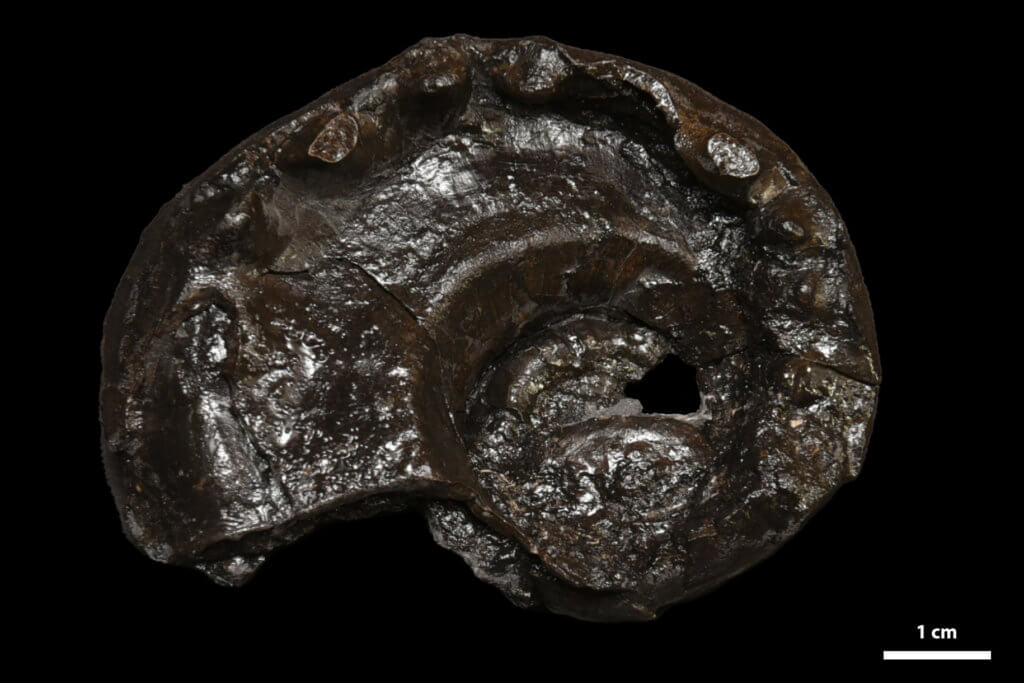
Where to buy all of these tools
Local hardware stores have been mostly disappointing when it comes to true fossil hammers. You might find a real Estwing Rock Pick in the hammer aisle, but it’s rare. I’ve bought most of my tools on Amazon. Occasionally you’ll find deals on eBay, but you should hope to find a brand-new rock hammer that someone bought and forgot about for years. There are gems to be discovered when you go “digging” on that website. For Dewalt tools, the big box stores have been getting hammered by Amazon prices, almost anything you see is $20—$40 cheaper on Amazon. You just have to wait for it to get there.
Below is a list of links to the items on Amazon.com, but please do comparison shopping as some specialty shops carry the more obscure items and sometimes they are cheaper. These are affiliate links, and whatever money I make from purchases goes directly to pay for web hosting or the purchase of more of these types of tools.
I have since bought and experienced a few additional hammers since I first wrote this article. The 14 oz hammers are nice and feature a rounded head, whereas the 13 oz hammers have an angled point. Also, the E30 with the leather grip has been a pleasure to use. Aside from some small differences—for example, I’ve never actually used an orange handle, only the blue ones—I’ve used all of the tools below.
| Name | Type | Amazon Link |
|---|---|---|
| Dewalt DPG82-11 | Eye Protection | See the price |
| Estwing Rock Pick – 22 oz. – E3-22P (Blue Grip) | Rock Hammer | See the price |
| Estwing Rock Pick – 22 oz. – E3-23LP (Long Handle, Blue Grip) | Rock Hammer | See the price |
| Estwing Rock Pick – 22 oz. – EO3-22P (Orange Grip) | Rock Hammer | See the price |
| Estwing Rock Pick – 13 oz. – E13P (Leather) | Rock Hammer | See the price |
| Estwing Rock Rick – 14 oz – EO-14P (Orange) | Rock Hammer | See the price |
| Estwing Rock Pick – 22 oz – E30 (Leather Grip) | Rock Hammer | See the price |
| Estwing Rock Pick – 24 oz – E6-24PC (Blue Grip) | Rock Hammer | See the price |
| Estwing Bricklayers/Mason’s Hammer – 22oz – E6-22BLC | Rock/Mason Hammer | See the price |
| Estwing Drilling/Crack Hammer – 3-Pound Sledge – B3-3LB | Sledge Hammer | See the price |
| Fiskars IsoCore 4 Pound Club Hammer – 750810-1001 | Sledge Hammer | See the price |
| Husky 16 lb Sledgehammer | Sledge Hammer | Check Lowes |
| Fiskars PRO 750640-1001 IsoCore Sledge Hammer, 36″, 16 lb | Sledge Hammer | See the price |
| Estwing Gad Pry Bar – 18″ Forged Geological Tool – GP-18 | Pry Bar | See the price |
| Estwing Geo/Paleo Rock Pick – 25″ GP-100 | Rock Pick | See the price |
| Estwing Burpee Rock Pick – 17″ BP500 | Rock Pick | See the price |
| Dewalt 4 1/2 inch angle grinder – DWE4120 | Corded Angle Grinder | See the price |
| Dewalt 20V MAX XR Angle Grinder, Slide Switch – DCG405B | Battery Angle Grinder | See the price |
| Dewalt 7-inch angle grinder – DW840 | Corded Angle Grinder | See the price |
| Chicago Pneumatic CP 9361 | Air Scribe | See the price |
Specimen Storage
For specimen storage, I’ve not had luck shopping online. The white boxes I used to store specimens in all come from the Wal-Mart jewelry box aisle, and the clear stackable trays I store those in come from Target.
Additional Fossil Hammer Resources
- Estwing – Wikipedia Article: https://en.wikipedia.org/wiki/Estwing
- Tools for Collecting Fossils – Illinois State Geological Survey
- Inside a Paleontologist’s Field Kit – Natural History Museum of Utah

